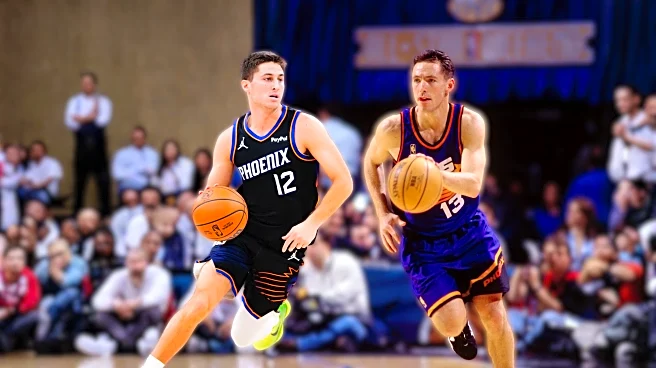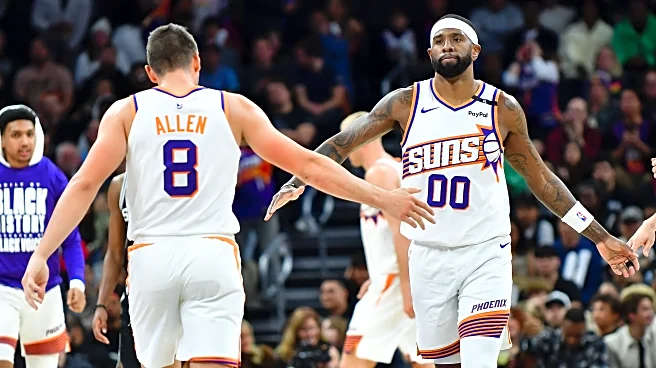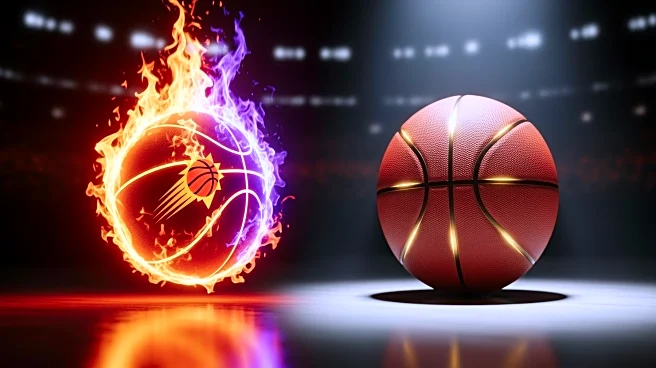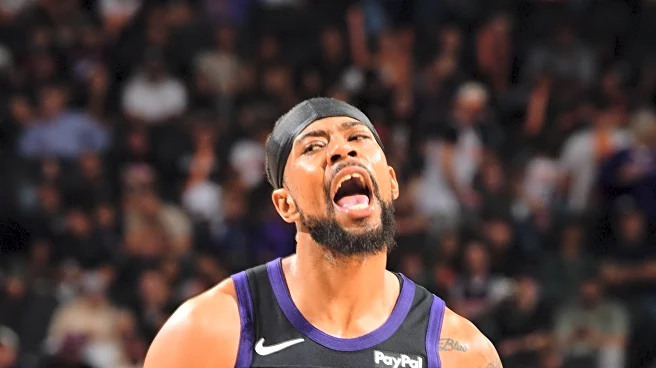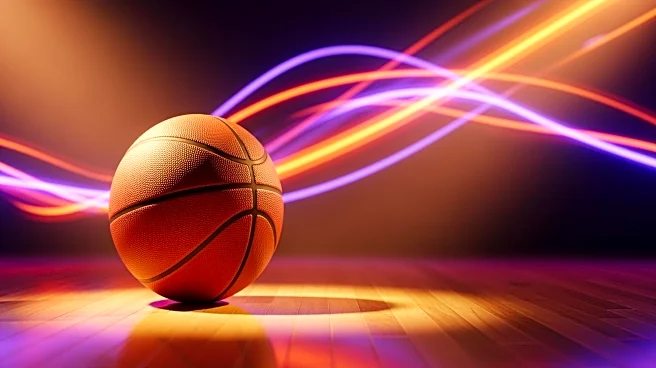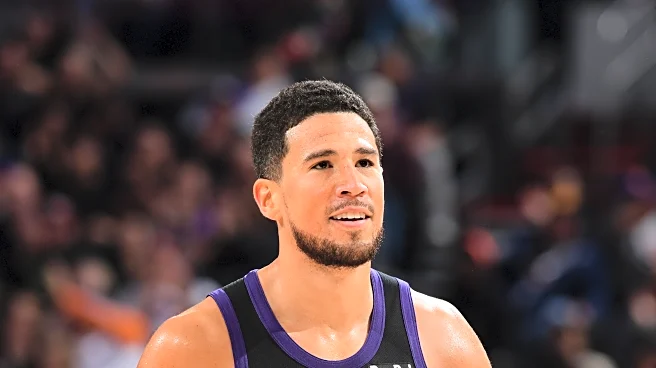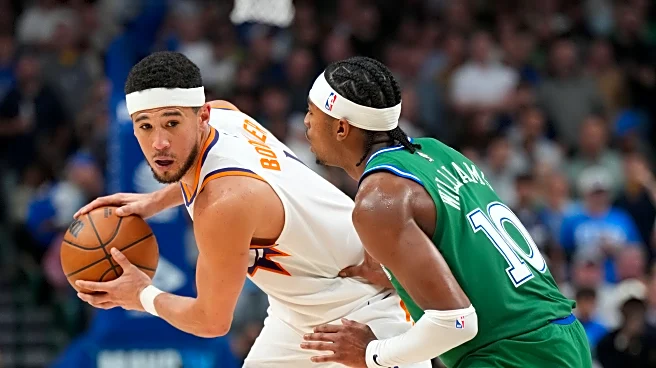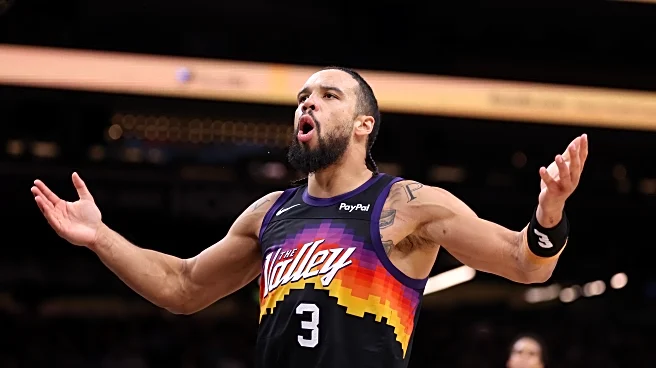I’ve been a Suns fan since Tom Chambers joined Kevin Johnson and Jeff Hornacek for the 1987-88 season. Through the next five seasons, I missed watching or listening to a grand total of 3 games. I missed a lot
more after I decided to get my college degree at the minimum security federal prison known as The United States Naval Academy, but I still followed as closely as I could.
One of the most indelible memories connecting Suns basketball and my time at boat school was staying up late into the night, alone in the darkened wardroom, before a final exam on May 1, 1997, to watch Game 4 on a grainy 27-inch CRT television. The eighth-seeded Suns were pushing the Seattle Supersonics to the brink in the first round of the Western Conference playoffs. I almost got written up for how loudly I yelled when Rex Chapman hit an impossible, over-the-shoulder, turn-around, buzzer-beating three to send the game to overtime.
So, when someone online asked who this year’s surprising team reminded me of, my mind went immediately to the 1996-97 Suns for a whole host of similarities.
During the 1996 offseason, the Suns had traded an ageing first ballot HOF’er (Charles Barkley then, Kevin Durant now) for a bunch of players who didn’t pan out (Sam Cassel, Robert Horry, and Chucky Brown then, Jalen Green, Khaman Maluach, and Rasheer Fleming now). The lone exception was a hard-nosed, defensive-minded forward (Mark Bryant then, Dillon Brooks now).
Both teams began with very limited expectations, and both also started with some UGLY losses. The team in ‘96 began 0-8 before Ainge replaced Cotton Fitzsimmons as coach. This year’s team? They started 1-4 with a pair of blowout losses. Both teams seemed to turn it around due to the schemes instituted by their young coach.
There are a lot of similarities in the rosters, too.

They featured a superstar who did it all in big guard (Kidd then, Booker now) and a lightning-quick penetrating guard who can’t seem to stay healthy due to hamstring injuries (Kevin Johnson then, Jalen Green now) and had a so-so three-point shot. They both featured a chippy, athletic, white shooting guard three-point specialist who saw a lot of time at small forward (Rex Chapman then, Grayson Allen now).
Both featured a young white point guard off the bench in a crowded rotation (Steve Nash then, Collin Gillespie now). Their starting small forward ultimately saw a lot of minutes at power forward. Both featured a one-sided-the-court, 6’7” specialist (Cedric Ceballos on offense then, Ryan Dunn on defense now) coming off the bench, whose minutes were somewhat limited by their limitations on the other side of the court, and lack of three-point range. Both teams featured a three-point specialist who sees minutes at both front-court positions (Wesley Person then, Royce O’Neale now).
Both teams had similar situations at power forward and center. They only had one decent true center on the team (Hot Rod Williams then, Mark Williams now), and a weak rotation at power forward (Mark Bryant, Wayman Tisdale, and Chucky Brown then, Rasheer Fleming, Nigel-Hayes Davis, and Isaiah Livers now). A couple of power forwards (Mark Bryant then, Oso Ighodaro now) end up playing backup center, but neither has the size or rebounding for it, and neither was any sort of offensive threat.
Because of similar roster compositions, both teams had a similar style of play and theory of victory. The teams stayed in games with hustle, grit, ball movement, and three-point shooting. Both were guard-heavy, frequently running small-ball 3 or 4 guard lineups. Often, they would play a small forward (Person or sometimes Ceballos then, Brooks, Dunn, or O’Neale now) at power forward. Things tended to fall apart when either of the Williams who played center came off the court due to the terrible backups (Loren Meyer or Horacio Llamas then, Ighodaro, Richards, and Maluach now). Both teams relied heavily on switches on defense, along with fast hands to make passing lanes disappear. They also were very three-point reliant for the time (though the NBA meta has changed considerably since then).
There are some key differences, of course: history doesn’t truly repeat itself, it only rhymes.
There isn’t really an equivalent to Danny Manning on this year’s team, nor Jordan Goodwin in 1996-97. The slow start to the 2025 season wasn’t nearly as bad as it was for the 1996-97 team, which started a miserable 0-13. That team lost its first 8 under Fitzsimmons, and then another 5 under Ainge. That version of the Suns didn’t have anyone quite like Dillon Brooks except perhaps Michael Finley (who was traded for Kidd mid-season), but Brooks is also a generational villain: very few players lean in to being hated so hard.
It remains to be seen how the season finishes for the 2025-26 Suns. However, the surprising 1996-97 team might be prophetic again. Those Suns went 40-42, barely made the playoffs as a 7th seed, and faced the number-two seed Seattle Supersonics in the first round. This year’s team could easily end up playing the Oklahoma City Sonics — I mean Thunder — in the first round as well.
It’s not hard to imagine this year’s scrappy, undersized team pressing the bigger, heavily favored Thunder to a game six or seven with their frenetic pace, chippy defense, and three-point heavy style of play.
So maybe that’s why this group feels so familiar to me. Not because they’re destined to replicate what happened nearly three decades ago, but because they tap into that same underdog pulse that once kept a younger version of me awake in a dark wardroom, clinging to every possession on a flickering TV.
